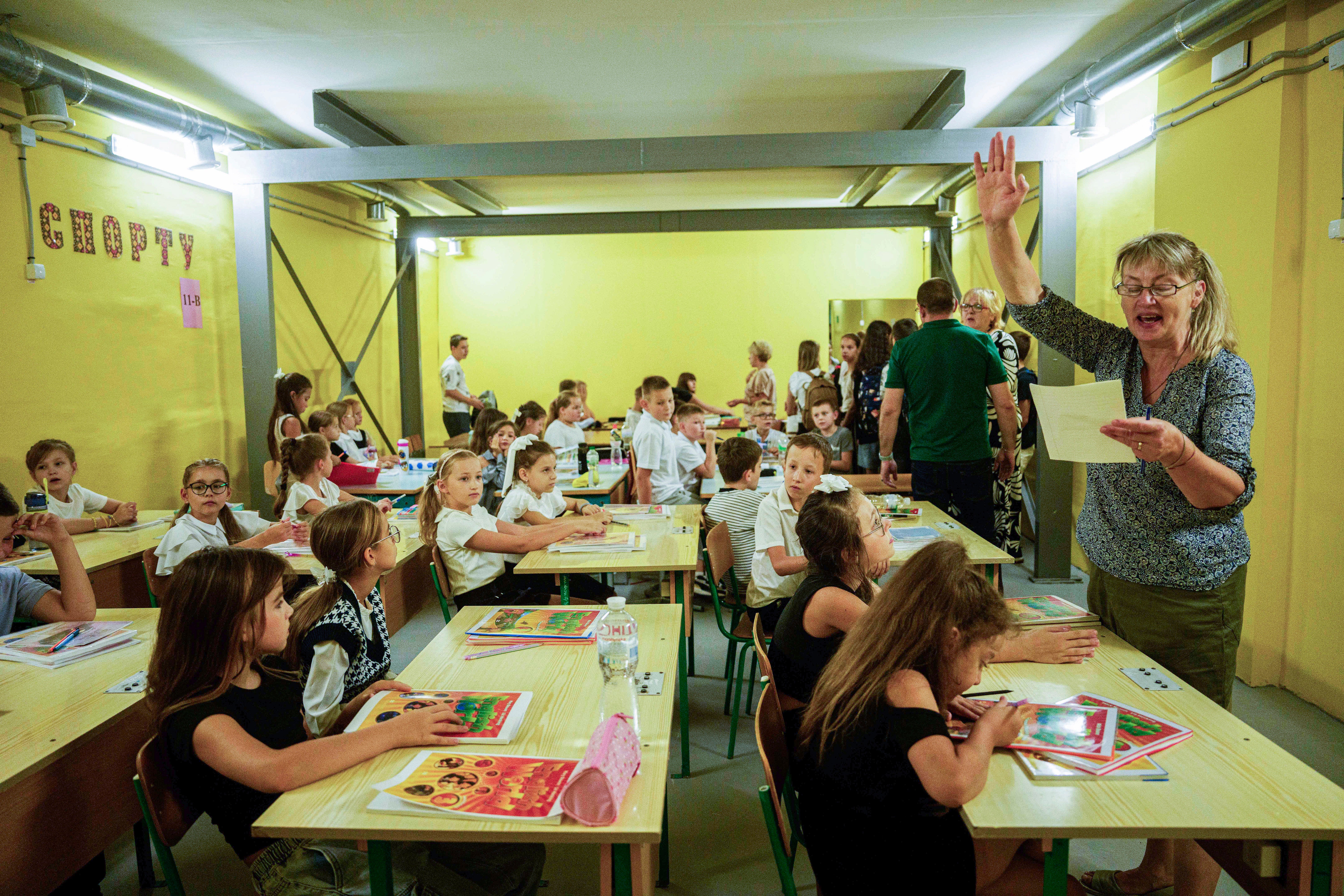Takeaways from AP story on Ukrainian schools built underground to guard against bombs and radiation
Most of the Russian weapons that hit the Ukrainian city of Zaporizhzhia kill in an instant: the drones, the ballistic missiles, the glide bombs, the artillery shells

Most of the Russian weapons that hit the Ukrainian city of Zaporizhzhia kill in an instant: the drones, the ballistic missiles, the glide bombs, the artillery shells. But Russian soldiers control another weapon they have never deployed, with the potential to be just as deadly: The nearby Zaporizhzhia nuclear power plant.
The NPP, as it’s known, once produced more electricity than any other nuclear power plant in Europe. It fell to Russian forces in the first weeks of the full-scale invasion, and Russia has held its six reactors ever since. The plant has come under repeated attacks that both sides blame on the other.
These twin dangers – bombs and radiation – shadow families in Zaporizhzhia. An Associated Press team spent nearly a week in the city to learn about its building binge for its future: an underground school system.
Here's what AP found:
Cold shutdown
About 50 kilometers (31 miles) away, the Zaporizhzhia nuclear plant has been in in cold shutdown for two years after intense negotiations between the International Atomic Energy Agency and the Russian government. The IAEA has rotated a handful of staff on site ever since.
There are risks even in cold shutdown, when the reactor is operating but not generating power. The main danger is that its external electrical supply, which comes from Ukrainian-controlled territory under constant Russian bombardment, will be cut off for a longer period than generators can handle.
The nuclear plant needs electricity to keep crucial backups functioning, including water pumps that prevent meltdowns, radiation monitors and other essential safety systems. Russia has repeatedly struck at Ukraine’s grid, attacks that have intensified this year. Highlighting the constant danger, electricity to the NPP was cut yet again for three days as emergency workers struggled to put out the fire.
The Zaporizhzhia plant has a safer, more modern design than Chornobyl, known in Russian as Chernobyl, and there’s not the same danger of a large-scale meltdown, experts say. But that doesn’t reduce the risk to zero.
Nearly 4 years out of school
Most of the youngest residents of the city have never seen the inside of a classroom. Schools that had suspended in-person classes during the COVID-19 pandemic nearly four years ago continued online classes after the war started in February 2022.
Construction has begun on a dozen subterranean schools designed to be radiation- and bomb-proof and capable of educating 12,000 students.
The cost to build a subterranean school system is enormous — the budget for the underground version of Gymnasium No. 71 alone stands at more than 112 million hryvnias ($2.7 million). International donors are covering most of it, and the national and local governments have made it a priority on par with funding the army.
But most parents say bombs, which strike the city daily, are a far more tangible fear than radiation.
Russian nuclear threats
Ukrainian President Volodymyr Zelenskyy accuses Russia of targeting nuclear plants deliberately. Russian forces seized control of the Chornobyl area in the first days of the invasion, only to be driven back by Ukrainian forces.
Since the start of the war, Russia has repeatedly alluded to its nuclear weapons stockpile without leveling direct threats. In September, Russian President Vladimir Putin said that Russia would consider any attack by a country supported by a nuclear-armed nation to be a joint attack and stressed that Russia could respond with nuclear weapons to any attack that posed a “critical threat to our sovereignty.”
Ukrainian officials fear that the Russian attacks on Chornobyl and the Zaporizhzhia nuclear plants may be just a start. During his speech in late September to the U.N. General Assembly, Zelenskyy warned that Russia was preparing strikes on more nuclear plants, which generate a large portion of Ukraine’s electricity.
___
The Associated Press receives support for nuclear security coverage from the Carnegie Corporation of New York and Outrider Foundation. The AP is solely responsible for all content.
___
Additional AP coverage of the nuclear landscape: https://apnews.com/projects/the-new-nuclear-landscape/
Bookmark popover
Removed from bookmarks